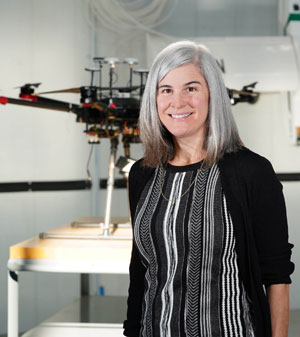The seed industry is stressing the need for more public funding to augment resources from the private sector, not just for research but for aging infrastructure at land-grant universities, as Congress prepares to start work on the upcoming farm bill.
Speaking at last week's American Seed Trade Association CSS & Seed Expo, representatives of the organization said continued uncertainty about policies from agencies such as the Food and Drug Administration, Department of Agriculture and Environmental Protection Agency is delaying investment in technology such as gene editing.
“In the area of regulatory policy for gene-edited plants, the U.S. is out of alignment and lagging behind countries, like those in South America — putting the U.S. at an economic and innovation disadvantage,” said Fan-Li Chou, ASTA's vice president of scientific affairs and policy.
President Joe Biden's executive order on advancing the U.S. bioeconomy "is an opportunity for the U.S. to re-establish an innovation-enabling regulatory environment by the three agencies working towards alignment in both regulatory scope and implementation," she said.
"The current lack of predictability and timely regulatory decision-making, especially for plants developed using new breeding technologies like gene editing, is disproportionally impacting smaller private and public sector breeders’ ability to bring improved crops to market. It impacts the ability of new companies to raise funds, attract investors; it impacts the ability of public sector researchers to incorporate these tools into their research programs.”
Bethany Shively, ASTA's vice president of strategic communications, also said as Congress considers incentivizing cover crops in the farm bill, it needs to provide “certainty around those programs” so the seed industry has time to prepare to meet demand.
“If tomorrow, all of a sudden, we're asked to increase [cover crop acreage] by however many millions of acres, we can't do it overnight, it takes a little bit of a lead-in,” she said. “So we want to make sure that we're pushing for the right policies and infrastructure so that the seed industry can meet that demand.”
In addition to research on different cover crops, “there is also a need for additional data on current and prospective cover crop acreage,” said Janae Brady, ASTA’s vice president of government affairs. “This will be important as the seed industry prepares to meet the needs of producers.”
Katy Martin Rainey, an associate professor of plant breeding and genetics at Purdue University, appeared on behalf of ASTA before the Senate Ag Committee last week, where she argued that “efficient and productive agriculture systems all start with seed.”
But in the current climate — both atmospheric and political — “U.S. agricultural production is faced with a complex array of emerging threats like extreme weather and new pests, combined with simultaneous needs to provide enhanced ecosystem services,” she told the panel. “More is expected of the crops themselves, which increasingly provide not just food, but also renewable fuels and meat alternatives, while also sequestering carbon and using less fertilizer.”
Speaking to Agri-Pulse on the sidelines of ASTA's recent CSS & Seed Expo in Chicago, Rainey gently pushed back against what she characterized as a bit of “doom and gloom from the senators,” which included concerns about how long corn and soybean yields can keep increasing annually and the impact of elevated input prices on farmers’ bottom lines.
“At least in the seed industry, we're super hopeful,” she told Agri-Pulse, mentioning advanced analytics and technologies that have yet to be deployed widely, either because they’re new or the regulatory environment is not predictable enough.
Questioned at the hearing by Sen. Mike Braun, R-Ind., Rainey said “some promising technologies” that need more investment and “a favorable regulatory policy environment” include gene editing, predictive analytics to bring more productive seeds to farmers, and use of sensors “to detect weeds and then deliver herbicides in a very concentrated an effective way.”
Rainey said she expected the release early next year of a strategic plan for the National Plant Germplasm System. In her testimony, she said the plan would be “instrumental in establishing a road map for the sustainability of NPGS for years to come, allowing scientists access to critical plant germ plasm, and enabling the development of new varieties and hybrids that resist pests, diseases, and environmental stresses.”
 Katy Martin Rainey, Purdue
Katy Martin Rainey, Purdue
The challenge for the NGPS “is the amount of effort it takes just to regenerate the stocks, catalog and then distribute them. And then, are we utilizing them as much as we could? Do we know enough about what's in the collection?”
“There's so many diverse stakeholders that use that system,” she said. “So I think implementing a plan will really unify a lot of diverse stakeholders.”
As to whether the industry is optimistic that yields will continue to grow, Rainey said, “Yes — that’s what we’re doing,” citing a consistent one-third of a bushel annual increase in soybean yields due to genetics. The rate is even larger for corn. According to Purdue's Bob Nielson, corn grain yields in the U.S. “have steadily increased since the 1950s at almost 2 bushels per acre per year.”
The sad state of land-grant research facilities also came up at the hearing and in Agri-Pulse’s interview. The Association of Public Land-grant Universities has previously put an $11.5 billion price tag on deferred maintenance costs for research facilities — and a replacement cost of $38.1 billion.
Rainey detailed her own issues, including ceiling tiles falling on her computer, as well as colleagues’ problems, mentioning an Iowa State entomologist who had to temporarily shut down research because of a leaky ceiling.
The decrepit condition of many buildings that were built as long as 80 years ago also is not a good talking point when trying to recruit graduate students, Rainey said.
Current economic conditions also are posing a challenge, “The job market is so promising right now,” she said. “Students can get paid really well just to work retail, for example.”
For more news, go to www.Agri-Pulse.com.


